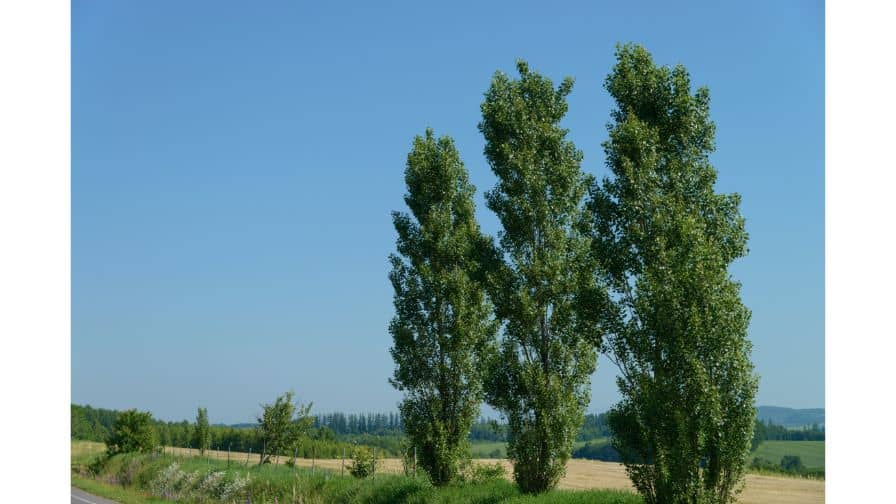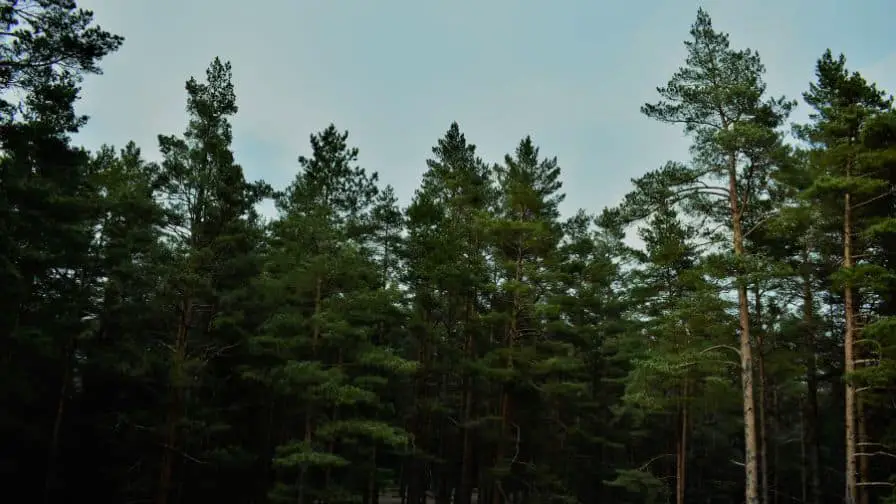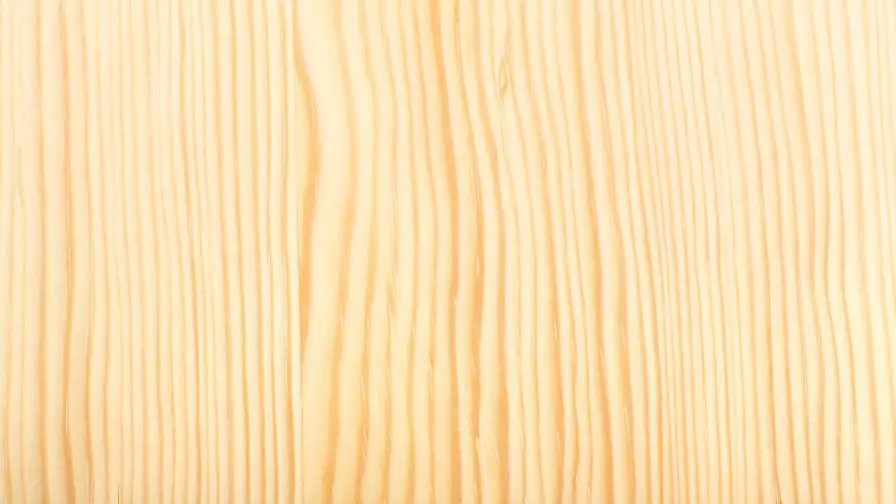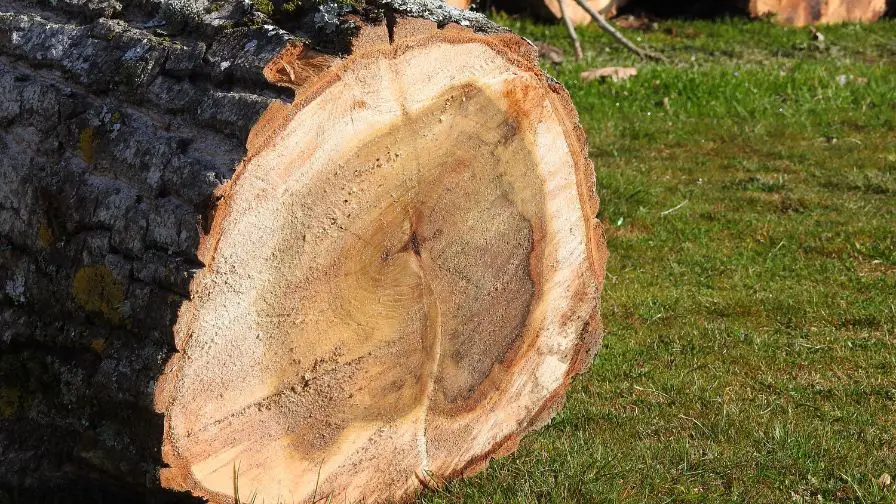
When it comes to choosing the right type of wood for your project, the options can be overwhelming. Do you with pine or poplar? Both kinds of wood have their unique benefits and drawbacks, so how do you decide which is the best for you?
In this blog post, we will compare poplar vs pine in terms of price, strength, and durability. We will also discuss the pros and cons of each wood type so that you can make an informed decision when choosing the right one for your needs!
What Is Poplar Wood?
Poplar wood is a type of hardwood although it is one of the softer hardwood species. It is often used in the construction of homes and other buildings. Poplar wood is also a popular choice for furniture, cabinetry, and other woodworking projects. If you are looking for strong and durable wood, poplar is a great option.
It is native to North America and can be found in a variety of colors including white, yellow, green, and even purple. It can grow to be over 100 feet tall and is a popular choice for landscaping.
Poplar wood is also known for its beautiful grain. The grain of poplar wood is often described as being “striking” or “unique.” Poplar wood can be used in a variety of different ways, depending on the look you are going for. If you want a rustic look, poplar wood can be a great choice. If you are looking for something more modern, poplar wood can also be used.

What Is Pine Wood?
Pine is a type of softwood that is widely used in construction and furniture-making. It is an inexpensive, strong, and durable wood that has a variety of uses.
Pine wood is typically light in color, ranging from pale yellow to reddish brown. The grain is straight and fine, making it easy to work with. Pine is a popular choice for painting and staining, as it takes paint and stain well if properly sealed.
Pine is a relatively soft wood, so it is not ideal for use in high-traffic areas or for outdoor furniture. It is also susceptible to damage from insects and rot. However, pine is an excellent choice for many indoor applications, such as paneling, flooring, and trim.

Poplar Vs Pine – Price
Generally, Pine wood costs less than Poplar. For example, common construction-grade pine lumber like Southern Yellow Pine might cost around $0.75 to $0.85 per board foot while Common Western Softwood Poplar can cost you $0.90-$0.95 per board foot.
So if you are price sensitive and looking for an inexpensive wood then Pine could be the way to go. But if you are looking for a beautiful w still relatively inexpensive then Poplar is definitely worth considering.
Poplar Vs Pine – Janka Hardness
To answer the question of which one is better, we need to look at the Janka hardness test. This test measures the amount of force required to push a steel ball into the wood. The higher the number, the harder the wood.
White Pine has a Janka hardness of 380 lbf. vs Poplar which has a Janka hardness of 540 lbf. So, poplar is definitely the harder of the two kinds of wood.
Poplar Vs Pine – Durability
When it comes to durability, Poplar is the clear winner. Pine is a softwood that is more susceptible to damage and rot. Poplar is a hardwood that is much more resistant to both of these issues. If you are looking for wood to use in an outdoor project, Poplar is the way to go. Pine will not be able to withstand the elements as well as Poplar will.
Subscribe to Baird Brothers Fine Hardwoods on YouTube
Poplar Vs Pine – Wood Type
Poplar and pine are two types of wood that are often used for different purposes. Poplar is classified as a hardwood, while pine is classified as a softwood.
Poplar is a hardwood that is often used in furniture making and construction. Poplar as hardwood is less likely to warp or crack than pine.
Pine is a softwood that is often used in crafts and woodworking. Softwoods are lighter and easier to work with than hardwoods. Pine is also more affordable than poplar.
Poplar Vs Pine – Tree Size
One of the key differences between poplar and pine trees is their size. Poplars typically grow to be 130-160 feet tall, while pine trees can reach up to 200 feet in height. Because Poplars are generally shorter, they are often used in landscaping and construction projects where a smaller tree is desired. Pine trees, on the other hand, are better suited for wooded areas or large open spaces.
Poplar Vs Pine – Location
Poplar trees are located in North America, Europe, and Asia. Pine trees are found in North America, Europe, Asia, and Africa.
Poplar Vs Pine – Color
When it comes to the color of the wood, poplar and pine are quite different. Poplar heartwood is light cream to yellowish brown in color, while pine heartwood is light reddish/yellowish brown. If you’re looking for a specific color for your project, poplar may be the better choice. Their sapwood colors are also different, with poplar sapwood being white to pale yellow and pine sapwood being nearly white.
Subscribe to Mean’s Woodshop on YouTube
Poplar Vs Pine – Grain
Pine has a straight grain and medium texture. Poplar also has a straight grain that is uniform and a medium texture.
These grain patterns can affect the look of your project. If you want a more natural look, pine may be the best choice. If you are looking for a cleaner, more modern look, poplar may be the better option.
Poplar Vs Pine – End Grain
The end grain of a piece of wood is the direction in which the grain runs. There are three main types of end grain: flat, quartersawn, and riftsawn. Flat-grained wood is the most stable and durable, while quartersawn and riftsawn wood is more pliable and easier to work with.
So which has the better end grain between Poplar and Pine?
Poplar end grain is small and has pores that are in no specific arrangement. This makes it more difficult to work with than Pine. Pine, on the other hand, has medium-sized resin canals that run throughout the wood. This gives it better stability and makes it easier to work with.
So if you’re looking for a durable piece of wood that is easy to work with, Pine is the better choice. If you’re looking for a more pliable piece of wood, Poplar is the better choice. But at the end of the day, it’s up to you and what you’re looking for in a piece of wood.
Poplar Vs Pine – Rot Resistance
Pine is a species of tree that is moderately resistant to decay. This means that it is not as susceptible to insect attack as poplar trees are. Pine trees are also more tolerant of cold temperatures than poplar trees. Poplar trees are more vulnerable to disease and pests than pine trees. However, pine trees require more maintenance than poplar trees. Pine trees need to be pruned and trimmed more often than poplar trees.
Pine trees are a better choice for areas where there is a lot of snowfall. Poplar trees are a better choice for areas that are prone to drought. Poplar trees are also a better choice for areas that are prone to flooding. Pine trees are a better choice for areas that are exposed to strong winds.
Poplar Vs Pine – Odor
When it comes to deciding between poplar and pine, one important factor to consider is odor. Poplar wood has no characteristic odor, while Lodgepole Pine has a faint, resinous odor. If you’re looking for wood that won’t add any extra scent to your home, poplar is the way to go.
However, if you don’t mind a little bit of pine scent, Lodgepole Pine may be the better choice for you. Whichever you choose, make sure to check with your local lumberyard to see what’s available in your area.
Subscribe to WoodWorkWeb on YouTube
Poplar Vs Pine – Sustainability
Poplar trees are among the fastest-growing trees. This means they are more sustainable than Pine trees. There are several reasons for this.
First, Poplar trees grow back quickly after being harvested. This is important because it means there is less of an impact on the environment. Pine forests can take many years to regrow, which can lead to deforestation.
Second, Poplar trees require less water than Pine trees. This is important because it means they are more drought-resistant. Pine trees need a lot of water to survive, so they are more likely to die during periods of drought.
Third, Poplar trees are less susceptible to pests and diseases. This is important because it means they are more likely to survive in the wild. Pine trees are often attacked by pests and diseases, which can lead to them dying.
Fourth, Poplar trees produce more oxygen than Pine trees. This is important because it means they improve air quality.
Overall, Poplar trees are more sustainable than Pine trees. They have a number of advantages that make them better for the environment. If you are looking to plant a tree, Poplar is the way to go. Pine might be the traditional choice, but Poplar is the better option for sustainability.
Poplar Vs Pine – Uses
Poplar is a hardwood that is commonly used in a variety of applications. It’s used for pallets, crates, upholstered furniture frames, paper (pulpwood), and plywood. Poplar is also a popular choice for cabinetry, molding, and trim.
Pine is also a softwood that is commonly used in a variety of applications. It’s used for veneer, plywood, sheathing, subflooring, boxes, crates, posts/poles, interior trim, and cabinetry. Pine is also a popular choice for furniture due to its strength and durability.

Poplar Vs Pine – Related Species
Species related to Poplar trees include the Aspen, Cottonwood, and Linden. All these trees are deciduous and have broad leaves. They are all fast-growing trees, with the Aspen being the fastest. The Cottonwood is the tallest of the three, while the Linden is the widest.
Pine trees have many different species as well, including the following:
- Austrian Pine: It is a hardy tree that can grow in many different climates.
- Caribbean Pine: This species is known for its resistance to diseases and pests.
- Eastern White Pine: The Eastern White Pine is the tallest pine tree in North America.
- Jack Pine: The Jack Pine is a small pine tree that is native to North America.
- Jeffrey Pine: The Jeffrey Pine is a large pine tree that can grow up to 100 feet tall.
- Khasi Pine: The Khasi Pine is a medium-sized pine tree that is native to Asia.
- Limber Pine: The Limber Pine is a large pine tree that can grow up to 100 feet tall.
- Loblolly Pine: The Loblolly Pine is a large pine tree that can grow up to 150 feet tall.
- Longleaf Pine: The Longleaf Pine is the tallest pine tree in the world, and can grow up to 200 feet tall.
- Maritime Pine: The Maritime Pine is a small pine tree that is native to Europe.
- Ocote Pine: The Ocote Pine is a medium-sized pine tree that is native to Mexico.
- Patula Pine: The Patula Pine is a small pine tree that is native to South America.
- Pinyon Pine: The Pinyon Pine is a small pine tree that is native to North America.
- Pitch Pine: The Pitch Pine is a medium-sized pine tree that is native to North America.
- Pond Pine: The Pond Pine is a small pine tree that is native to North America.
- Ponderosa Pine: The Ponderosa Pine is the largest pine tree in North America, and can grow up to 200 feet tall.
- Radiata Pine: The Radiata Pine is a large pine tree that can grow up to 100 feet tall.
- Red Pine: The Red Pine is a large pine tree that can grow up to 100 feet tall.
- Sand Pine: The Sand Pine is a small pine tree that is native to North America.
- Scots Pine: The Scots Pine is the largest pine tree in Europe, and can grow up to 150 feet tall.
- White Pine: The White Pine is a large pine tree that can grow up to 100 feet tall.
Poplar Vs Pine – Pros And Cons
Poplar trees are known for their tall, straight trunks and columnar shape. They are a popular choice for landscaping because they grow quickly and provide privacy screening and windbreaks. Poplar trees are also relatively low-maintenance.
There are some cons to poplar trees, however. They have shallow root systems, which can make them susceptible to toppling in high winds. They are also short-lived compared to other trees, with a lifespan of only 20-30 years.
Pine trees are one of the most common types of trees in the world. They are loved for their beautiful needles, pleasant scent, and attractive cones. Pine trees are also very versatile, and can be used for everything from lumber to paper products.
Pine trees do have some drawbacks, however. They are susceptible to insect infestations and disease, and their needles can be sharp and difficult to clean up. Pine trees also require more maintenance than other types of trees, and they can be messy when they shed their needles.

What Are The Differences Between Poplar And Pine?
When it comes to deciding between poplar and pine, there are a few key differences that you’ll want to keep in mind.
Pine is typically more affordable than poplar, but poplar is often considered to be a more attractive wood and more durable. Poplar is also generally easier to work with than pine.
If you’re looking for a wood that’s easy to work with and has a high degree of versatility, poplar is probably the better option for you. However, if you’re working on a budget, pine may be the better choice.
Whichever wood you choose, make sure that you take the time to understand the differences between them so that you can make the best decision for your project.
What Are The Similarities Between Poplar And Pine?
The similarities between poplar and pine are quite striking. Both trees are tall and slender, with long, straight trunks. Their leaves are also similar in shape and size, and both trees produce cones.
How To Finish Poplar Wood
Subscribe to ExpertVillage Leaf Group on YouTube
Poplar Is Best For:
Pine and poplar are both softwoods, but they have different strengths. Poplar is best for:
-Building furniture
-Making cabinets
-Crafting turned objects
-Creating veneers
Pine Is Best For:
Before deciding between the two kinds of woods, think about what your project needs. Pine is best for:
-Building framing lumber
-Structural construction lumber
-Fencing material
-Firewood
Is Poplar Or Pine More Expensive?
When it comes to price, poplar is more expensive than pine. Pine is less expensive and more widely available, making it a good choice for budget-minded projects.
Pine is a good choice if you need a large quantity of lumber. Pine trees are more common than poplar trees, so pine lumber is more widely available. If you’re working on a big project, you may be able to find the lumber you need at a lower cost than poplar.
Does Poplar Warp Easily?
No, poplar does not warp easily. In fact, it’s one of the more stable woods out there. Pine, on the other hand, is a bit more prone to warping and twisting.
Poplar is a close-grained wood, which is why it resists warping. Pine is not as close-grained, so it’s more likely to warp over time. If you’re looking for a wood that will hold up well over time, poplar is a good choice. Pine may be less expensive, but it’s not as durable. When it comes to warping, poplar is the clear winner.
How To Stain Pine Wood
Subscribe to Charleston Crafted on YouTube
Is Poplar Water Resistant?
No, poplar is not water resistant. Water molecules easily get inside the wood and start rotting it. There are a few reasons for this.
First, the cell structure of poplar is open. This means that there are more opportunities for water to enter the wood.
Second, Poplar has a low density. This means that it is not as good at repelling water molecules.
Third, Poplar is more susceptible to fungal attacks. This is because the fungi that cause rot can more easily penetrate the wood.
So, if you are looking for a water-resistant wood, Poplar may not be the right choice.
Can Poplar Be Used For A Cutting Board?
No, poplar shouldn’t be used for a cutting board. Poplar is too soft to be used as a cutting surface, and because it is highly porous, it easily sucks up bacteria. If you’re looking for a durable and sanitary cutting board, Poplar may not be the best option.
Is Pine OK For Cutting Boards?
Yes, Pine can be used as a cutting board. However, Pine is a softwood, which means it’s prone to scratches. This may not be ideal if you’re looking for a cutting board that will last long. But with proper care, your pine cutting board will last for years.
Does Poplar Dent Easily?
Poplar is a hardwood, so it does not dent easily. Because it is a very strong wood, it can withstand a lot of wear and tear. If you’re looking for wood that will hold up well to heavy use, poplar is a good choice.



